Bones are made of osseous or hard tissue and are among the first organs to form in a fetus. Normally, humans have more than 200 bones in the body, some of which fuse together as they grow. Bones provide structure and mobility to a body, as well as protection to internal organs.
The bone marrow, located in the center of most bones, is where new blood cells are made. Furthermore, skeletal muscles are attached to bones. This means mobility is directly impacted by how much weight and tension these two can withstand. Since bones have a number of vital functions, it is important for people of all ages to maintain good bone mass.
Bone strength for children and teenagers
Childhood is a time for rapid bone growth. The dietary and exercise habits developed at this stage have a hand in the growth of bones that can hold their own against osteoporosis and other musculoskeletal ailments in later life. The best way to help children strengthen their bones is by ensuring they have a calcium-rich diet. Milk and dairy products are good sources of calcium, as are tofu and salmon. For lactose-intolerant children, you can substitute milk products with soy or calcium-fortified orange juice.
Weight-bearing exercises like running or wall climbing, or organized sports like tennis and basketball are also helpful in maintaining good bone density. The more your children exercise, the stronger their bones become. Like other internal organs, bones are dynamic, and the tension that exercise provides helps them build endurance.
For adolescents, it is equally important to stick to a calcium-rich diet. From ages nine to 18, children are recommended to have about 1,300 milligrams of calcium in their meals and drinks. A quarter of their adult bone mass will be gained during puberty, so they must at least double their daily calcium intake from childhood. They should also maintain the exercise habits developed as children or even increase them in intensity.
Bone strength for young and middle-aged adults
Adults can also build bone mass, but the process slows down considerably after puberty and eventually stops at around age 30. After school, most people do not have ready opportunities to join sports. People looking to keep their bones strong should consciously seek out ways to keep themselves active, whether through a personal exercise regimen or by engaging in recreational sports during their free time.
After age 30, humans stop building bone mass, so it is important to stay with the diet and exercise habits from youth to early adulthood. Though bone density can no longer be improved, these habits can help maintain an individual’s bone mass, and support the regrowth of bone material. Something to take note of, especially for women, is hormonal changes brought by menopause. The cessation of a woman’s monthly period puts her at risk for weakened bones. Women concerned about developing osteoporosis should speak with their primary care doctor or a family doctor.
Bone strength for the elderly
Above the age of 65, bone mass and density start to actively deteriorate. To temper the progression of bone-related conditions, seniors should strive for at least 150 minutes of exercise every week. This does not have to be in large chunks of time; 30 minutes at moderate intensity per day is enough. Jogging, yoga, or tai chi are good exercises for those in this age group. Since these activities make use of joints, they also help ease arthritis-related discomfort.
Giving seniors vitamin and mineral supplements also helps them maintain bone strength. Products high in vitamin D, calcium, and vitamin K promote stronger bones in the elderly. Aside from this, a diet full of leafy greens and protein is also recommended.
Conclusion
Bone strength and development should not end in childhood. Sticking to healthy eating and exercising will help individuals maintain their bone mass and density. Speaking with physicians and medical experts is an important part of developing a well-rounded health plan.
If you are looking for primary care doctorsin North Bergen and Secaucus, NJ, set an appointment with us today. We can answer other questions you may have about the care and maintenance of bones as well as other concerns in primary care or cardiopulmonology.
